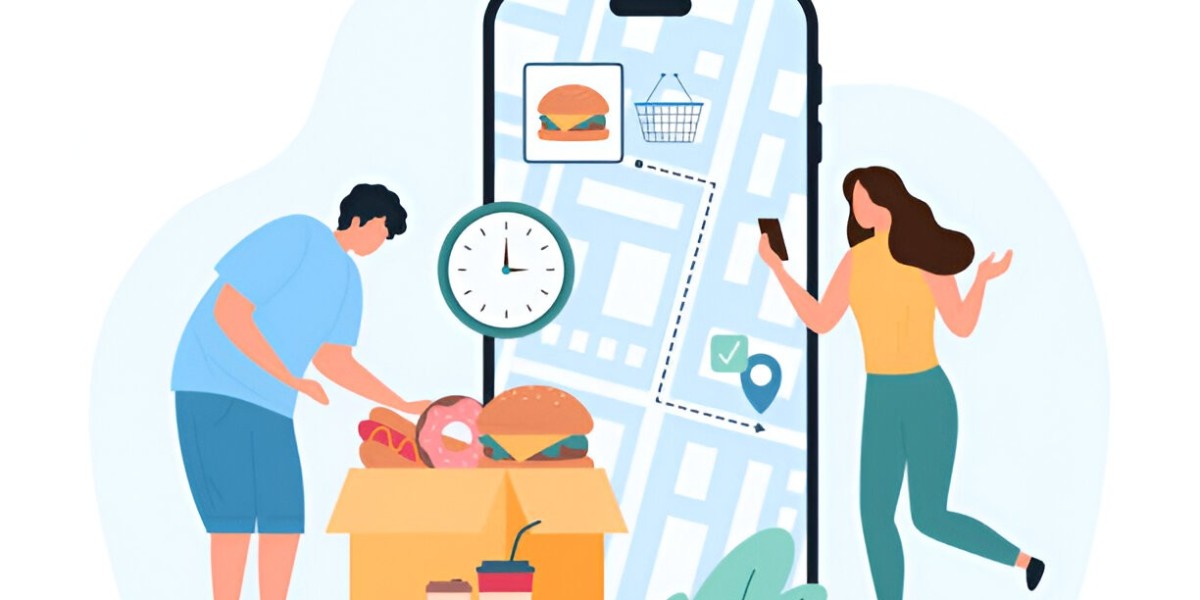In today’s fast-paced digital world, the convenience of having your favorite meal delivered at your doorstep with just a few taps is no longer a luxury, it's an expectation. Food delivery apps have transformed the food and beverage industry by combining innovation, speed, and customer-centric services. From startups to enterprise-level companies, food delivery app development has become a competitive space teeming with opportunities.
In this blog, we will cover the key aspects of food delivery app development, explore the top 10 food delivery apps in the USA, and give you a roadmap for building your own app like Uber Eats.
Why Food Delivery Apps Are Dominating the Market
The rise in on-demand food delivery services is driven by lifestyle shifts, urbanization, and the desire for convenience. Millennials and Gen Z users prefer mobile-first experiences, making food delivery apps a go-to solution for their hunger needs. According to recent reports, the online food delivery segment is projected to reach over $500 billion globally by 2030, with the USA being one of the biggest markets.
Key Benefits of Food Delivery Apps:
Convenience for users
Real-time order tracking
Increased revenue for restaurants
New revenue streams for entrepreneurs
Data-driven insights for marketing and personalization
Top 10 Food Delivery Apps in the USA (2025 Edition)
If you're planning to enter the market, it's important to understand your competition. Here's a look at the top 10 food delivery apps in the USA that have set industry benchmarks:
Uber Eats
A global leader, known for its wide delivery network and seamless integration with restaurants.DoorDash
Dominates the U.S. market with an extensive reach in suburban areas.Grubhub
Offers diverse payment options and loyalty programs.Postmates
Owned by Uber, this app delivers everything from meals to groceries.Instacart
Known for delivering groceries and household items, often includes restaurant food delivery.Caviar
Focuses on premium and upscale restaurants.Seamless
A sister brand of Grubhub, mainly used in metro areas.ChowNow
Supports local restaurants with custom ordering systems.Slice
Specializes in pizza delivery from local pizzerias.Gopuff
Combines food delivery with quick commerce (essentials, snacks, alcohol).
Key Features Every Food Delivery App Must Have
To build a successful food delivery app, your platform must be user-friendly, fast, and packed with features that solve real problems. Whether you're inspired by the Uber Eats Delivery App or aiming for something unique, these core features are a must:
For Customers:
User Registration & Login
Real-time GPS Tracking
Secure Payment Gateways
Order History & Reorder Options
Reviews and Ratings
Push Notifications for Offers & Order Updates
For Delivery Partners:
Delivery Request Alerts
Navigation Support
Earnings Dashboard
In-App Chat with Customers
For Restaurants:
Menu Management
Order Notification System
Performance Analytics
Customer Feedback Insights
Admin Panel:
Dashboard Overview
User & Restaurant Management
Commission Settings
Marketing & Promotions Tools
The Technology Stack Behind Food Delivery Services
To compete with top food delivery apps, a robust tech stack is essential:
Frontend: React Native, Flutter, Swift (iOS), Kotlin (Android)
Backend: Node.js, Python, PHP (Laravel)
Database: MongoDB, PostgreSQL, Firebase
Cloud Hosting: AWS, Google Cloud
APIs: Google Maps API, Stripe/PayPal API, Twilio for SMS
You’ll also need to implement AI/ML for personalized recommendations and predictive analytics, especially if you're building an Uber Eats Delivery App alternative.
Monetization Models for Food Delivery Apps
When planning your food delivery app development, it’s vital to consider how you’ll make money. Here are the most popular monetization strategies:
Delivery Charges
Surge Pricing
Subscription Plans (e.g., DashPass, Uber Eats Plus)
Restaurant Commission
Ad Placements for Featured Listings
Challenges in Food Delivery App Development
While the demand for food delivery apps is growing, so are the challenges:
Maintaining Service Quality Across Locations
Managing Logistics & Real-time Tracking
Ensuring App Speed and Low Latency
Balancing Commission Rates for Restaurants
Handling Refunds & Customer Complaints Promptly
Overcoming these requires a scalable app architecture and strong customer support systems.
How to Build an App Like Uber Eats
If you're inspired by the success of the Uber Eats Delivery App, here’s a simplified step-by-step roadmap for food delivery app development:
Market Research & Business Model Selection
UI/UX Design for Customer, Delivery, and Admin Interfaces
Choose the Right Tech Stack
Develop MVP (Minimum Viable Product)
Integrate APIs and Real-Time Tracking
Testing & Quality Assurance
Launch & Marketing Campaigns
Gather Feedback & Add Features Iteratively
Outsourcing to a reliable app development company can accelerate your time-to-market while maintaining high quality.
Future Trends in Food Delivery Services
To stay ahead of the curve, keep an eye on these upcoming trends:
Drone and Robot Deliveries
Sustainable Packaging Initiatives
Voice-Enabled Food Ordering
AI for Delivery Route Optimization
Virtual Kitchens & Cloud Restaurants
These trends will define how next-generation food delivery services operate, offering more convenience and eco-conscious choices to users.
Final Thoughts
Food delivery app development is no longer an emerging trend it’s a necessity in the digital food ecosystem. Whether you want to build an app like Uber Eats or introduce something disruptive, the success lies in combining technology, user experience, and innovative business models.
With the right planning and execution, you can create a platform that rivals the top food delivery apps in the USA, offering reliable, fast, and delightful food delivery services to customers across regions.






